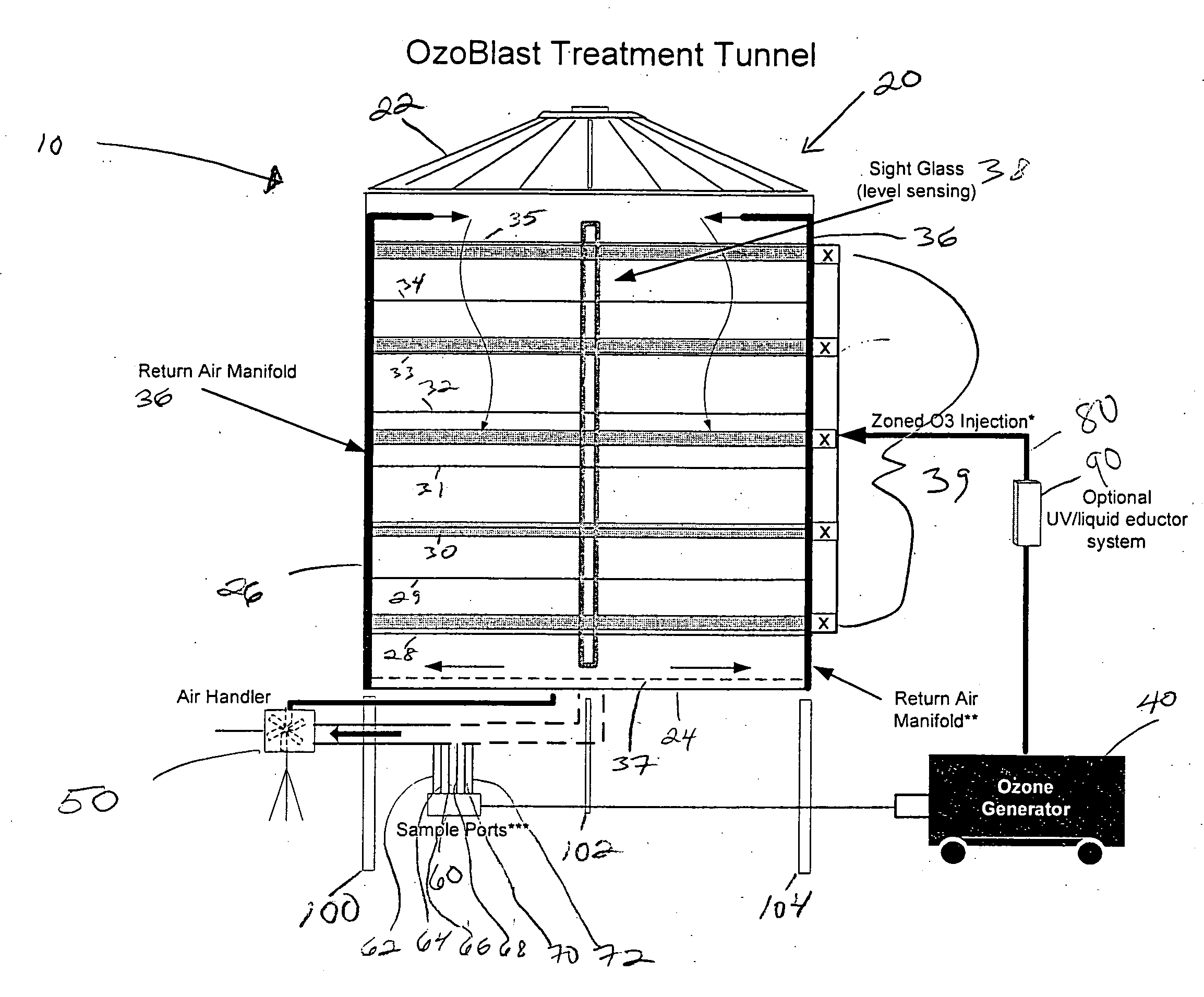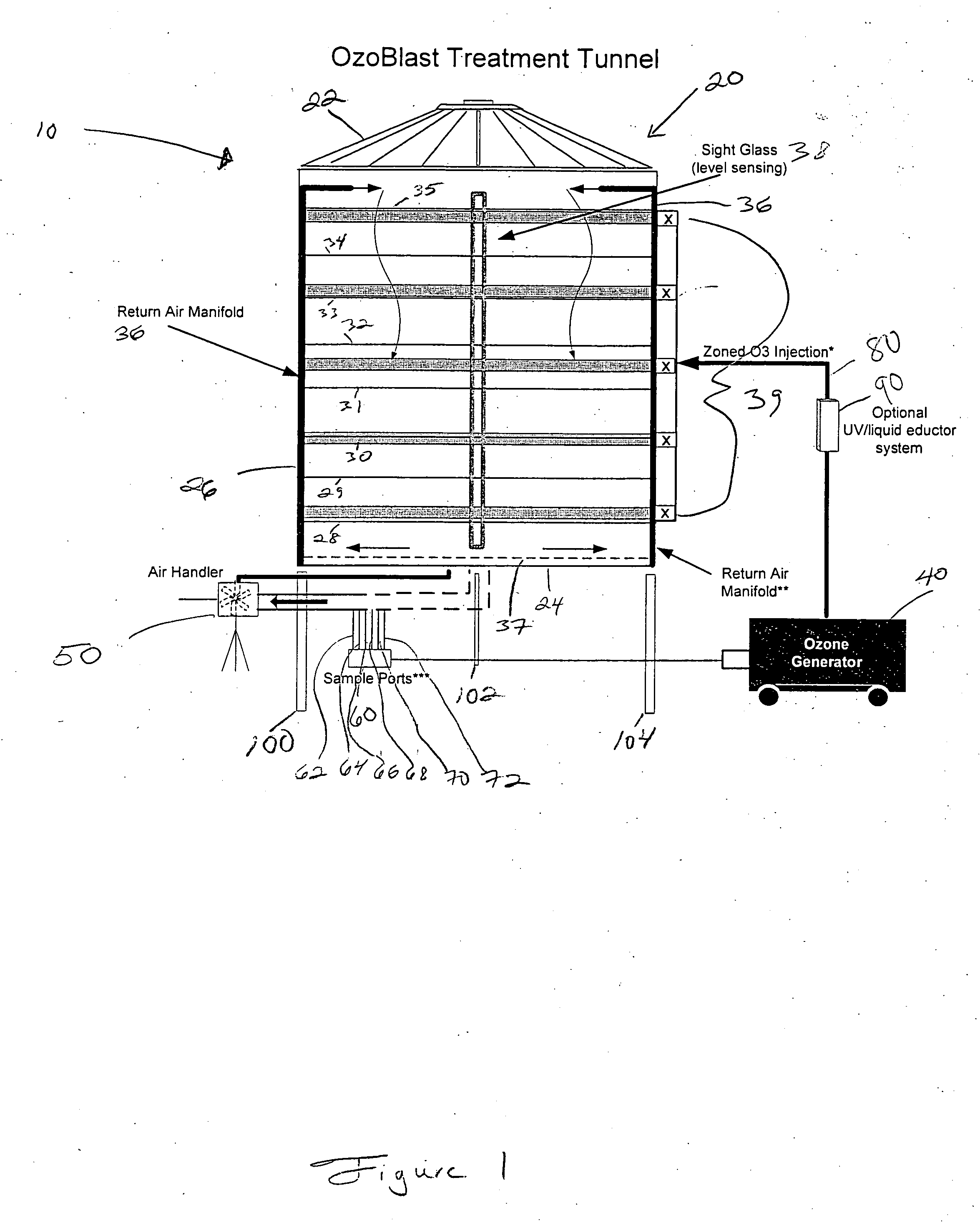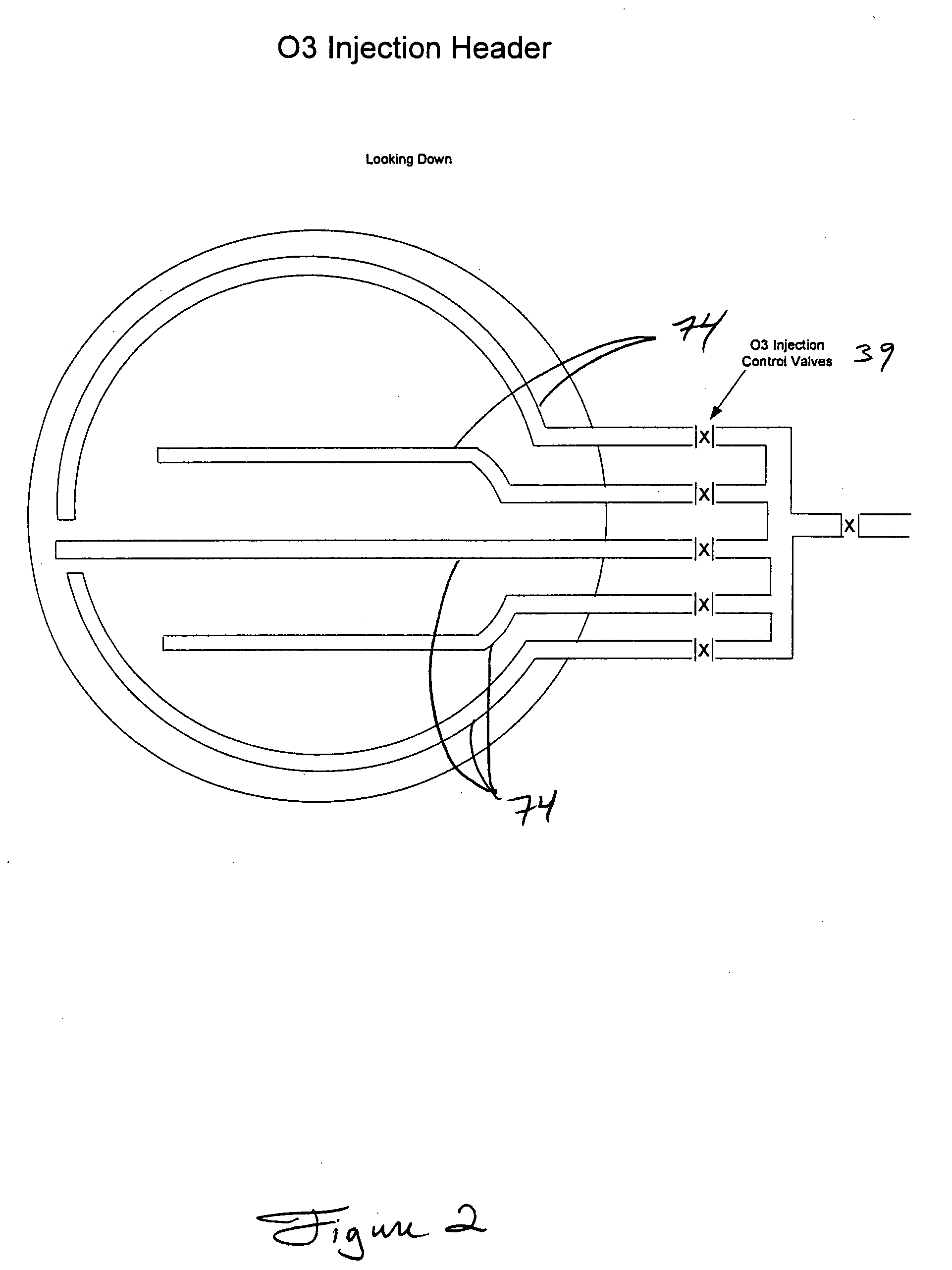Method and system for sanitization of grain products
a technology for sanitizing grain products and grain products, applied in the field of sanitizing grain products, can solve the problems of reduced cost-effectiveness of treatment, reduced size and associated cost of manufacturing ozone generation equipment to meet the demands of treating these large volumes, and inability to meet the requirements of large-scale treatment of grain, etc., to achieve the effect of improving crop preservation results
- Summary
- Abstract
- Description
- Claims
- Application Information
AI Technical Summary
Benefits of technology
Problems solved by technology
Method used
Image
Examples
Embodiment Construction
[0032] It is emphasized that the present invention, as illustrated in the figures and description herein, can be embodied in other forms. Thus, neither the drawings nor the following more detailed description of the various embodiments of the system and method of the present invention limit the scope of the invention. The drawings and detailed description are merely representative of the particular embodiments of the invention; the substantive scope of the present invention is limited only by the appended claims. The various embodiments of the invention will best be understood by reference to the drawings, wherein like elements are designated by like alphanumeric character throughout.
[0033] This invention relates to the field of the treatment of grain and / or grain products, hereafter referred to as grain. The use of the term grain also includes, but is not limited to corn, wheat, soybean, milo, barley, and sorghum and any other related item that would benefit from the elimination a...
PUM
 Login to View More
Login to View More Abstract
Description
Claims
Application Information
 Login to View More
Login to View More - R&D
- Intellectual Property
- Life Sciences
- Materials
- Tech Scout
- Unparalleled Data Quality
- Higher Quality Content
- 60% Fewer Hallucinations
Browse by: Latest US Patents, China's latest patents, Technical Efficacy Thesaurus, Application Domain, Technology Topic, Popular Technical Reports.
© 2025 PatSnap. All rights reserved.Legal|Privacy policy|Modern Slavery Act Transparency Statement|Sitemap|About US| Contact US: help@patsnap.com



